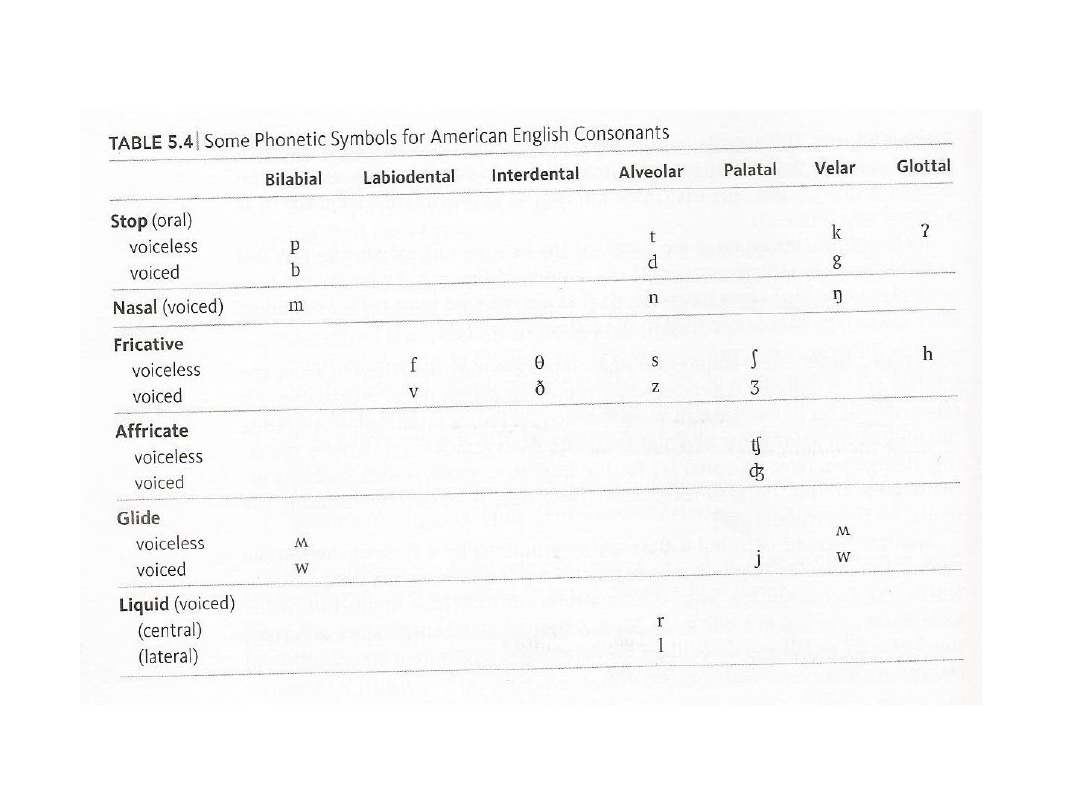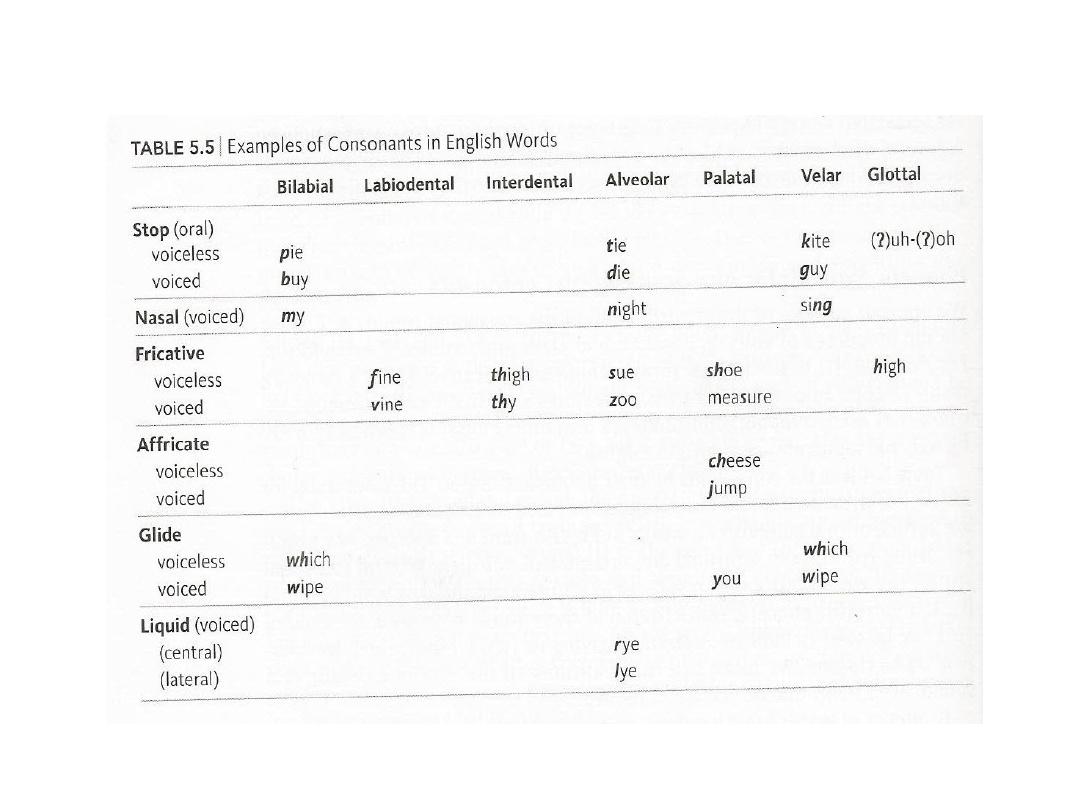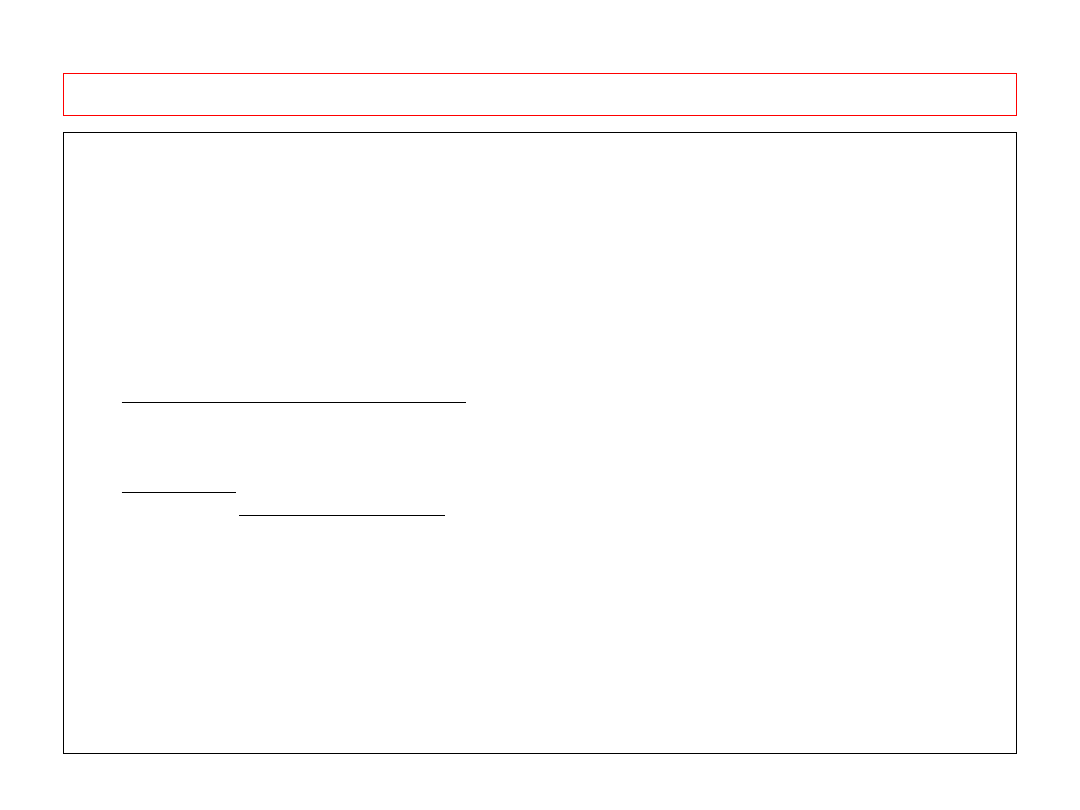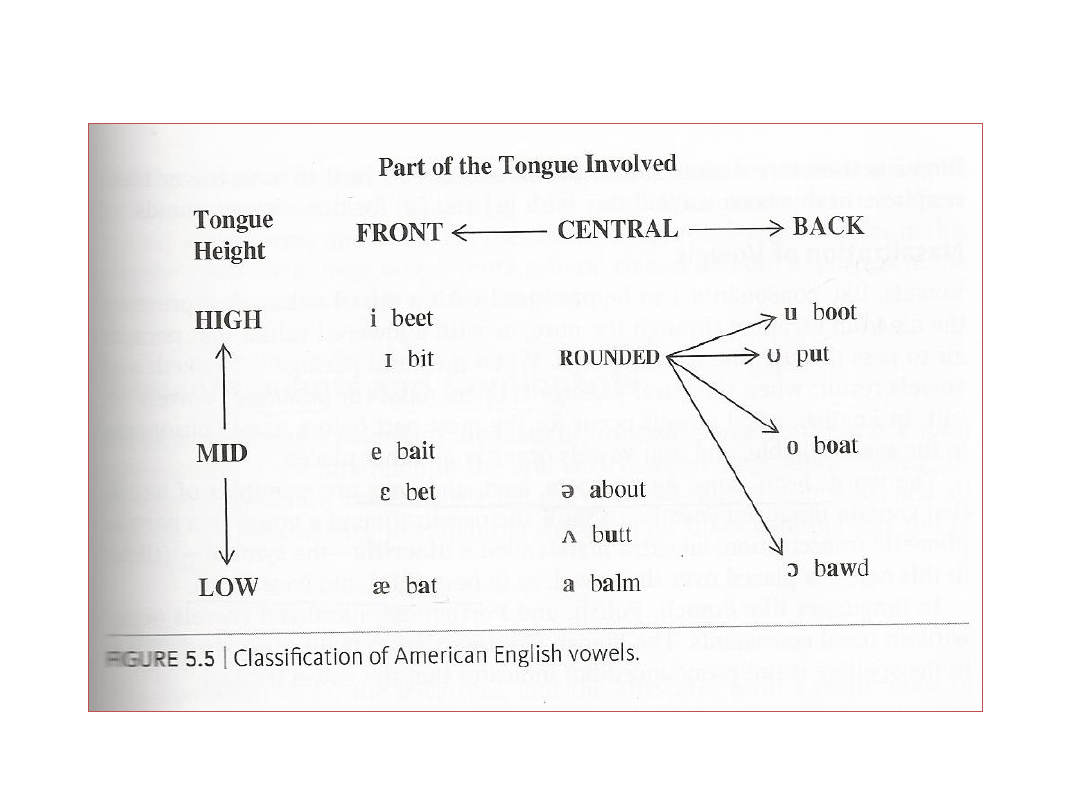


(2) Vowels(모음)
1. Vowels are produced with little restriction of the airflow from the lungs out through the mouth
and/or the nose. The quality of a vowel depends on the shape of the vocal tract as the air passes
through.
2. Vowels are described as four classifications.
(a) Tongue Position: front, central, back
(b) Tongue Height: high, mid, low
(c) Tenseness: tense/ lax
(d) Lip rounding: rounded/unrounded
============
(a) Tongue Position and (b) Tongue Height :
The tongue height of [i] and [u] is high in the mouth, while that of [æ], [a], and [ɔ] is low.
The tongue height of [e], [ɛ], [ə], and[ʌ] is mid in the mouth.
(c) Tenseness: Tense vowels have greater tension of the tongue muscles.
They are louder and a little longer in duration. Lax vowels has little tongue tension.
Tense: [i] beat Lax: [ɪ] bit
[e] bait [ɛ] bet
[u] boot [ʊ] put
[o] boat [ʌ] hut
[ɔ] saw [æ] hat
[a] pa [ə] about
[aɪ] high
[aʊ] how
[ɔɪ] boy

(d) Lip rounding:
The back vowels [u], [ʊ], [o], and [ɔ] in boot, put, boat, and bawd are the only rounded vowels.
3. Nasalization of Vowels
In English, vowels are nasalized for the most part before nasal consonants in the same syllable.
To show the nasalization, an extra mark [~] called a diacritic is placed over the vowel.
e.g.) bean, bone, bingo, boom, bam, bang
10<1>
